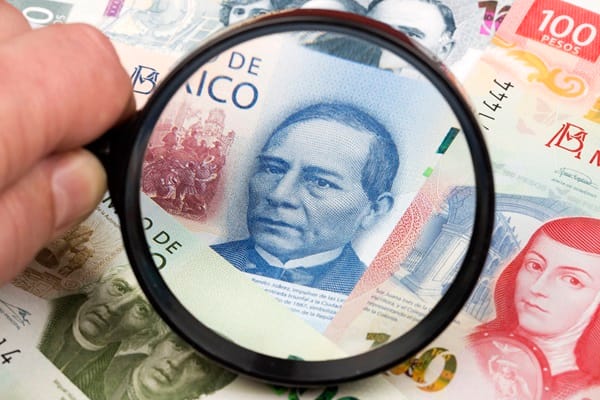Bussiness
Mexican peso among the most pressured LATAM currencies – London Business News | Londonlovesbusiness.com

The Mexican peso continues to operate under pressure, positioning itself as one of the most adversely affected currencies among the major Latin American currencies.
The USDMXN exchange rate has dropped more than 1%, registering a depreciation of -1.25%, surpassing the losses of the Chilean peso (-0.93%), the Colombian peso (-0.84%), and the Brazilian real (-0.79%).
This unfavorable dynamic of the peso is attributed to a confluence of both internal and external factors. Domestically, the deterioration in consumer confidence in September, following positive data in August, has raised concerns about the strength of internal demand and the country’s economic development pace.
Additionally, the political landscape in the United States adds pressure to the Mexican currency. Recent polls have shown an improvement in Donald Trump’s position, who has suggested the imposition of higher tariffs on exports from Mexico. These statements revive concerns about the trade relations between the two countries and their potential impact on bilateral trade.
On the international front, China’s economic situation plays a crucial role. Recent data indicates a slowdown in exports from the Asian giant and a lack of substantial fiscal stimulus from the Chinese government. This has negatively impacted currencies linked to global economic growth, such as the Mexican peso.
A turning point for the peso will be the release of China’s third-quarter GDP data, scheduled for this Thursday. It is anticipated that this figure will be below the 5% target set by Chinese authorities, with forecasts around 4.6%. A weaker-than-expected reading could exert additional pressure on the peso and other currencies tied to global growth.
It is also worth mentioning that the strengthening of the U.S. dollar has contributed to the peso’s depreciation. Investors are awaiting key U.S. economic data, including September retail sales and industrial production, as well as comments from Federal Reserve officials that could offer hints about future monetary policies.
In this complex environment, the Mexican peso could experience short-term volatility. The combination of internal and external factors suggests that the currency will continue to face challenges, making it essential to closely monitor economic and political developments that could influence its trajectory.










